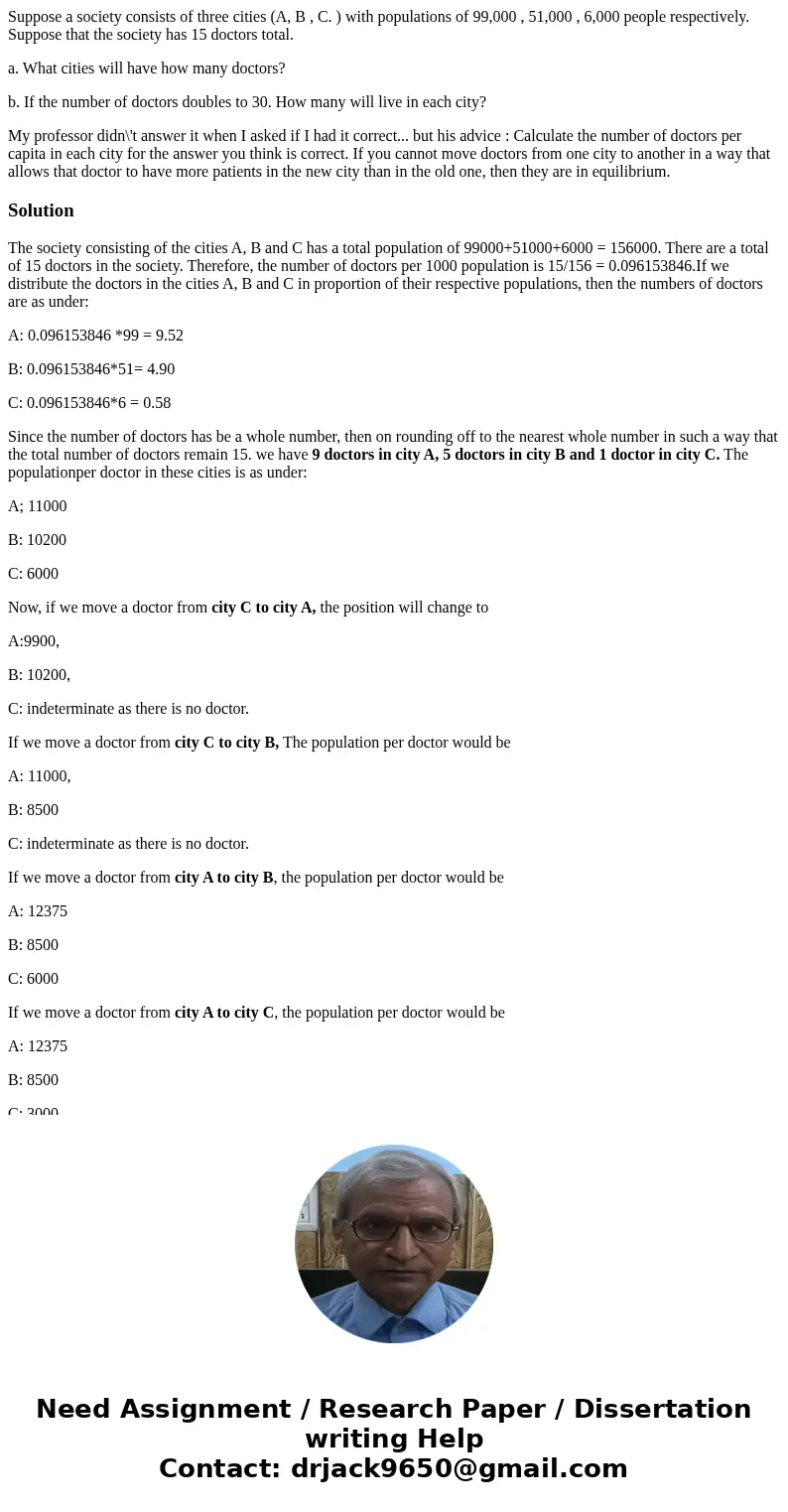Suppose a society consists of three cities A B C with popu
Suppose a society consists of three cities (A, B , C. ) with populations of 99,000 , 51,000 , 6,000 people respectively. Suppose that the society has 15 doctors total.
a. What cities will have how many doctors?
b. If the number of doctors doubles to 30. How many will live in each city?
My professor didn\'t answer it when I asked if I had it correct... but his advice : Calculate the number of doctors per capita in each city for the answer you think is correct. If you cannot move doctors from one city to another in a way that allows that doctor to have more patients in the new city than in the old one, then they are in equilibrium.
Solution
The society consisting of the cities A, B and C has a total population of 99000+51000+6000 = 156000. There are a total of 15 doctors in the society. Therefore, the number of doctors per 1000 population is 15/156 = 0.096153846.If we distribute the doctors in the cities A, B and C in proportion of their respective populations, then the numbers of doctors are as under:
A: 0.096153846 *99 = 9.52
B: 0.096153846*51= 4.90
C: 0.096153846*6 = 0.58
Since the number of doctors has be a whole number, then on rounding off to the nearest whole number in such a way that the total number of doctors remain 15. we have 9 doctors in city A, 5 doctors in city B and 1 doctor in city C. The populationper doctor in these cities is as under:
A; 11000
B: 10200
C: 6000
Now, if we move a doctor from city C to city A, the position will change to
A:9900,
B: 10200,
C: indeterminate as there is no doctor.
If we move a doctor from city C to city B, The population per doctor would be
A: 11000,
B: 8500
C: indeterminate as there is no doctor.
If we move a doctor from city A to city B, the population per doctor would be
A: 12375
B: 8500
C: 6000
If we move a doctor from city A to city C, the population per doctor would be
A: 12375
B: 8500
C: 3000
If we move a doctor from city B to city C, the population per doctor would be
A: 11000
B: 12750
C: 3000
Finally, if we move a doctor from city B to city A, the population per doctor would be
A: 9900
B: 12750
C: 6000.
Thus we have considered all the possibilities of movement of doctors among the three cities. The best possible option is the distribution of the doctors in the cities A, B and C in proportion of their respective populations and then rounding off to the nearest whole number in such a way that the total number of doctors remain 15. Thus, the answer is 9 doctors in city A, 5 doctors in city B and 1 doctor in city C.
If the number of doctors is doubled to 30, the number of doctors in the 3 cities would be as under:
A: 19 The population per doctor will be 5210
B: 10 The population per doctor will be 5100
C: 1 The population per doctor will be 6000


 Homework Sourse
Homework Sourse